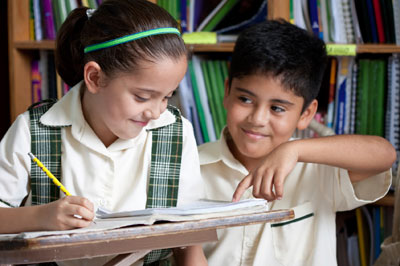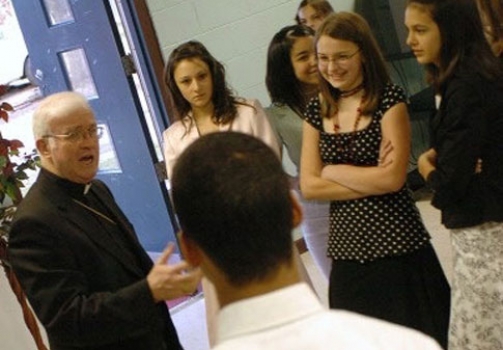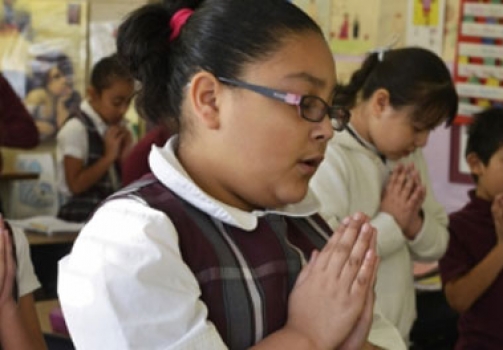Overview
More than just a simple presentation of the biological facts of reproduction, sexuality education (or “Sex Ed”) is commonly defined as the process of acquiring information and forming attitudes and beliefs about sex, sexual identity, relationships and intimacy.
Generally speaking, there are two types of sex education that are considered acceptable (by differing groups) to teach in schools. The first is referred to as comprehensive sex education; the second as abstinence education.
Perhaps the most significant difference between the two is that the aim of abstinence education is to prevent pre-marital sexual activity, while the aim of comprehensive sex education is to avoid pregnancy and sexually transmitted infections.
Abstinence education is often faith-based, with a focus on marriage as the only proper context for sex. Comprehensive sex education teaches that casual sex and sexual experimentation is normal activity for teens and focuses on STI awareness and prevention and contraceptive familiarity and know-how.
From a Catholic perspective, neither program is acceptable. Both reject the premise that sex education is the sole domain of parents.
Today, the Tasmanian Catholic Education Office, in its version of a sex education policy, Growing Towards Wholeness, states: “It is the duty and the privilege of Catholic school communities to form students towards mature, healthy and loving sexuality.” (Refer to Church teaching below: The parent’s rights in matters of sexuality education are never forfeited or transferred to another person, and certainly not to a school.)
Common arguments made
for Sex Education
for Sex Education
- Sex education reduces the risks of potentially negative outcomes from sexual behaviour, such as unwanted or unplanned pregnancies and infection with sexually transmitted infections, including HIV.
- Sex education helps to meet young people’s rights to information about matters that affect them, their right to have their needs met and to help them enjoy their sexuality and the relationships that they form.
- Young people already know about sex through various sources of information, and sex education adds to their existing knowledge and corrects any misinformation they may have.
- Parents do not know or have the capacity to educate their children about sexuality.

Why Sex Education Is Not the Answer
Sex education does not provide accurate information about reducing the risks of potentially negative outcomes from sexual behaviour. Comprehensive sex education overstates the efficacy of condoms in preventing pregnancy and STIs, and provides young people with a false sense of security.
Further reading:
Young people have a right to sound, medically accurate information about the risks associated with sexual behaviour. Comprehensive sex education programs fail to provide this.
One only need read through Dr Miriam Grossman’s website to understand that comprehensive sex education programs do not actually correct any misinformation that young people might have, but rather tend to perpetuate myths and false figures associated with the “safe sex” message. Her website can be accessed here.
To purport that parents do not know or have the capacity to educate their children about sexuality is a gross assumption about the majority of parents, who actually do love and care for their children and want the best for them. Most parents are not so out of touch that they can’t explain the facts to their children. It is ironic that sex education proponents would choose to take this task from the hands of the parents and place it in the hands of an authority who knows very little of the child’s background, development or prior knowledge.
Church Teaching on Sex Education
The family is, in fact, the best environment to accomplish the obligation of securing a gradual education in sexual life.
The Pontifical Council for the Family the Truth and Meaning of Human Sexuality – Guidelines for Education within the Family, 8 December 1995:
“Fathers and mothers have a natural competence to instruct their children with regard to sex. False modesty should not deter them from doing their duty in this regard. Sex is one of God’s endowments. It should not be ignored or treated as something bad. If sex education is properly carried on in the home, a deep reverence will be developed in the child and he will be spared the shameful inferences which he often makes when he is left to himself to find out about sex. We protest in the strongest possible terms against the introduction of sex instruction into the schools.” ~ Catholic Bishops of the United States Statement The Child: Citizens of Two Worlds, 17 November 1950
“Each child is a unique and unrepeatable person and must receive individualised formation. Since parents know, understand and love each of their children in their uniqueness, they are in the best position to decide when the time is appropriate for providing a variety of information, according to their children\’s physical and spiritual growth.”
“Parents should take an interest in the moral catechesis which is given to their own children outside the home and use it as a support for their own educational work. Such catechesis must not include the more intimate aspects of sexual information, whether biological or affective, which belong to individual formation within the family.”
Pope Pius XI Encyclical DiviniIlliusMagistri on Christian Education, 31 December 1929
“Far too common is the error of those who with dangerous assurance and under an ugly term propagate a so-called sex-education, falsely imagining they can forearm youths against the dangers of sensuality by means purely natural, such as a foolhardy initiation and precautionary instruction for all indiscriminately, even in public; and, worse still, by exposing them at an early age to the occasions, in order to accustom them, so it is argued, and as it were to harden them against such dangers.”
Famous Quotes
Art, like morality, consists in drawing the line somewhere. – G.K. Chesterton
The modern man, finding that Humanism and Sex both fail to satisfy, seeks his happiness in Science … But Science fails too, for it is something more than a knowledge of matter the soul craves. – Archbishop Fulton Sheen
Do Catholic schools have to teach Sex Education as the NSW guidelines and policies propose it be taught?
According to the science and health syllabi of the NSW Board of Studies, there is no absolute requirement to teach sex education in Catholic schools, yet so many Catholic schools teach it in a secular way. The Stage 5 (Year 9-10) science curriculum needs students to know basic biology of the reproductive organs and the body\’s hormonal influences on them.
The Personal Development Health Physical Education (PDHPE) syllabus contains references to the necessity of being aware of such things as sexual harassment, but these are not Sex Ed per se.
Of those parts of the PDHPE syllabus which are mandatory (much is listed under the heading of “additional content” and hence, it is reasonable to assume that this content may be omitted) the only mention of Sex Education that may be of concern are the following:

- In outcome 4.6 (Years 7-8), students are meant to learn about “acknowledging and understanding sexual feelings and expectations of males and females” and they do this by learning to “explain how gender expectations influence choices and options and evaluate standards of sexual behaviour considered appropriate by self, peers, family and community.”
- In outcome 5.6 (Years 9-10), students are meant to learn about “appropriately expressing and exploring sexual feelings, power, gender and risk taking, sexual choices and their consequences and planning and managing sexual health.” They do this by learning to “identify and evaluate safe sexual health practices, including methods of contraception, examine personal values and attitudes related to sexual health (and the factors that contributed to their formation) and analyse how sexual attitudes and behaviours and sexuality itself are influenced by gender expectations and assumptions.”
Obviously a teacher with a very solid grounding in Catholic moral principles with an exceptionally sensitive notion of the need to protect the innocence of his/her students, will be able to deliver this content in a way that is very respectful of the Church\’s teachings and the parental duty as first educators. The problems occur when a school and its staff lack that firm foundation and (worse still) have little regard for the protection and promotion of innocence and chastity amongst their students. Therefore, the school must be serious about innocence and purity instead of simply choosing to subject the children to a destruction of their innocence. Parents need to be made aware that educational choices matter.

Whats a school to do?
- The best approach, is to conduct education sessions for the parents where the required content can be taught to them in light of the Church\’s teachings and then have them in turn teach their students. As long as the parents are prepared to document that the content has been taught then the school need never bring such matters to the classroom.
- The second best option is to have only those teachers with the necessary formation and sensitivity teach the students. Male teachers should teach male students and female teachers should teach female students. While not a politically correct option, it is a practicable alternative.
Quick Facts
Objectification and sexualisation of girls
Sexualisation has been defined as the “imposition of adult sexuality onto children and young people before they are capable of dealing with it, mentally, emotionally, or physically.” (Papadopoulos, L. (2010) Sexualisation of young people review at
http://webarchive.nationalarchives.gov.uk/20100418065544/http://homeoffice.gov.uk/documents/Sexualisation-of-young-people2835.pdf?p.6)
Sexualisation occurs when:
- a person’s value comes only from his or her sexual appeal or behaviour, to the exclusion of other characteristics;
- a person is held to a standard that equates physical attractiveness (narrowly defined) with being sexy;
- a person is sexually objectified—that is, made into a thing for others’ sexual use, rather than seen as a person with the capacity for independent action and decision making; and/or
- sexuality is inappropriately imposed upon a person.
All four conditions need not be present; any one is an indication of sexualisation.
According to the American Psychological Association, premature sexualisation of girls also places them in increased danger of becoming victims of prostitution, violence, and unwanted forms of pornography.
Sex is used to market everything. “Sex sells” is the mantra of the global marketing industry. Portraying women as sex objects, is considered increasingly commonplace to incorporate an objectified version of sexuality into mainstream commercial activity.
Particularly damaging forms of sexualisation include sexual abuse and being prostituted or sexually trafficked.
Premature sexualisation is linked with serious mental health problems alongside eating disorders, low self-esteem and depression.
Pornography
The word “pornography” comes from the Greek words, porne, meaning a harlot, prostitute, or whore, and graphos, meaning a writing or depiction. If we put both words together we arrive at “A depiction or description of the activities of whores.” Men and women should be treated with respect and dignity. Pornography represents the very antithesis of this human reality. It makes people into objects by reducing sexuality to an impersonal, mechanical activity.
Pornography has an addictive effect. The addictive aspect of pornography has a biological substrate; the release of the dopamine hormone acts as one of the mechanisms for forming the transmission pathway to pleasure centres of the brain.
A recent British Independent Parliamentary Enquiry into Online Child Protection data shows that 4 out 5 16 year olds are accessing pornographic content weekly.
The average age at which a child first sees pornography online is 11.
Men are more than six times as likely to view pornography than women and more likely to spend more time viewing it.
Child pornography has become a $3 billion annual industry (Top Ten Reviews, 2005).
Pornography industry’s profit has been estimated by some analysts at over $14 billion dollars in the U.S. and is growing at an alarming rate.
Nearly 9 out of 10 (87%) young men and nearly one third (31%) of young women reported using pornography.
For help to stop pornographic addiction
Video / Audio
Suggested articles for further reading and links
- Randy Engel. Sex Education: The Final Plague. New Jersey USA: Human Life International, 1989.
- Growing Towards Wholeness: A Values-Rich Approach to Health and Sexuality Education for Students in Catholic Schools in the Archdiocese of Hobart, Policy and Content Framework of the Tasmanian Catholic Education Office accessed 10/12/13
- M. Grossman, M.D. You’re teaching my child what? A Physician Exposes the Lies of Sex Ed and How They Harm Your Child. Washington DC: Regnery Publishing Inc, 2009.
- The Age of (lost) innocence: The sexualisation of girls by Dr. Emma Vieira, pp 16-24
- Melinda Tankard Reist. Getting Real: Challenging the Sexualisation of Girls. North Melbourne USA: Spinifix, 2010.
- Women’s Forum Australia. Women’s Forum Submission to the ACT Children’s Plan . 12/12/13
- Jonathan Doyle. Being Catholic. Accessed 10/12/13 Click Here
- Catholic News Agency. Accessed 11/12/13 Click Here
- Miriam Grossman Website and Blog Click Here










